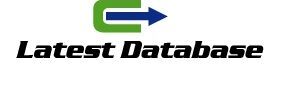For Google to index our blog in WordPress, it must be able to access the pages and their contents, follow the links, measure how long it takes to load each page, read the meta tags, among others. buy youtube views This allows you to classify the contents and their relevance for searches and indexing it in your already huge database.
Below we will see some tips that we must all implement if we are starting a new blogging project in WordPress.
Tips to improve indexing and positioning in WordPress
The first thing we must do as soon as we have created our blog is to inform Google of its existence, so that it starts as soon as possible to index the contents, both static and dynamic. To do this we must create a new property in Search Console (formerly known as Web Master Tools).
We must also send Google through Search Console the contents through the XML sitemap.
Once informed to Google, we must optimize the pages and blog posts to facilitate the task of indexing content to the robots sent by the search engine. For this we will verify:
- The “Title” and “Description” goals will be correctly optimized.
- The geolocation is important. If your blog is aimed at an exclusive audience in the province of Ourense, do not hesitate to enter the keyword Ourense in the Title and in Description.
- Use friendly URLs Not only do they facilitate reading to the user, but also to the robots.
- Insert the Google Analytics code.
- Use a responsive design / template.
- The posts must be well written and must be able to be read by the robots, this will facilitate the task of identifying the most relevant keywords in the article.
- The images, in addition to being optimized for web and devices, in terms of size and resolution, it is also convenient that the name of the file of the image is relevant and according to the content that accompanies it.
- We must not forget either the “alt” tags of the images, which will tell the google robot what the image is showing. Of course we can also use to introduce some keyword of the article or even as in the Title and in the Description, use some keyword of geolocation.
- It is convenient that each article belongs to at least one category, and it should not belong to more than three. If an article belongs to more than three categories occasionally, it will not be a problem either. But if it happens on a regular basis, perhaps the categories are not well differentiated.
- Of course, do not forget to include at least three labels in each post, which facilitate navigability among related articles.
- Flash no. HTML5 yes.
- We must make the most of our SEO plugin.
But also…
- We can perform a massive ping with tools like Mass Pinger (which also has an extension for Chrome). After the publication of new content, we can make a massive ping that will inform search engines that there is activity on the page and that we have new content to send to their robots. This is interesting if we do not publish daily. Since with more periodicity we publish, more often the robots will be indexed.
To use this tool we open our blog (in its main page, or in the new post we have uploaded) and click on the icon of the add-on. Immediately perform a massive ping through various web services. At the end of the process we will be shown if the ping was successful through each of these services.

This considerably speeds up the indexing of new articles in your blog. Of course this is one of many tools, but it is one of the few that has a Chrome add-on that makes the task easier with just two clicks.
All these recommendations must take them into account, whether you have a blog for a long time and you have not been able to optimize it before, or you are starting a new project in WordPress.
Have you tried Ping’s services to speed up indexing?
